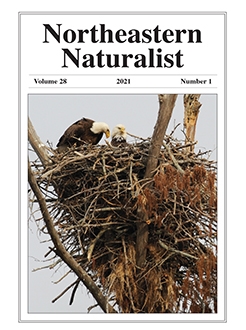Ant communities are an important component of ecosystem functioning, as ant activities often accelerate leaf-litter decomposition and nutrient cycling in forest soils. In Northeastern North America, global climate change is expected to accelerate forest succession, and the effects of this succession on forest ant communities remain relatively unexplored. This work aims to understand the effects of forest succession and productivity on the functional group diversity of New England ant communities by testing a prediction of species–energy theory. Our study took place at the Harvard Forest, MA, where we conducted localized ground surveys for ants and measured the productivity of 4 tree species dominant in New England. We found that both ant species richness and functional group richness were significantly higher in association with deciduous trees compared to coniferous tree types. Species richness and functional group richness were highly correlated. Contrary to the species–energy theory, we found no strong correlations between tree productivity and ant community composition or function. Our findings indicate that local, top-down forest processes may influence the composition and functioning of ant communities as New England forests become dominated by deciduous trees.
How to translate text using browser tools
3 February 2021
Forest Succession and Tree Identity Shape Species and Functional Group Richness of Ant Communities in New England
Maggie Anderson,
Israel Del Toro
ACCESS THE FULL ARTICLE

Northeastern Naturalist
Vol. 28 • No. 1
March 2021
Vol. 28 • No. 1
March 2021




